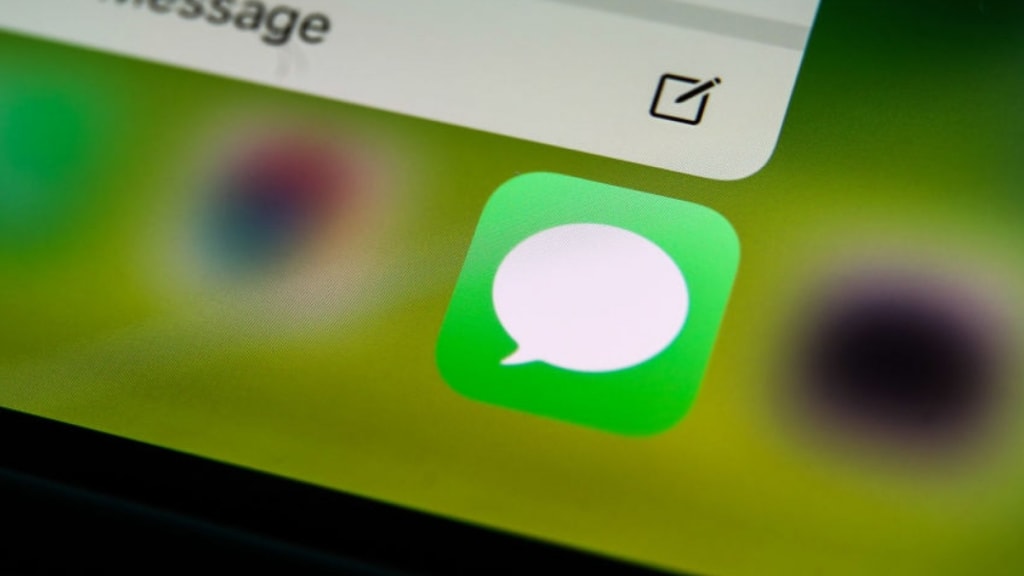The blue and green bubble controversy is real. If you don’t know what I’m talking about, you probably don’t use an iPhone–or, you don’t use one to send text messages to anyone else who doesn’t use an iPhone. If you did, their messages would appear in little green bubbles, a sign that even though you’re using the Messages app, many of the features you get when you send iMessages to another iPhone user aren’t available.
A lot has been written about the whole green bubble situation, including claims that Apple uses the green bubbles in order to flag non-iPhone users as second-class messaging partners on its platform. If that sounds ridiculous, consider that the stigma is real.
Mostly that’s because sending messages from an iPhone to any other device is a really bad experience. Your messages are sent and received as basic text messages, instead of using Apple’s encrypted protocol, which is called iMessage. I know, it’s confusing–iMessage is the service, and Messages is the app where you send messages, both text and iMessages.
When you send messages in the Messages app that aren’t iMessages, many of the features you might be used to aren’t supported–or at least, not supported well. You can’t reply in threads if someone in the group is on Android. You can’t add someone to a group. Tap backs–the feature that lets you “like” or “heart” a message–still don’t quite work right. They’ve gotten better but only because Google has made an effort to improve the experience–not Apple.
The point is that sending messages to someone with green bubbles is just a poor overall experience. Considering that sending text messages, in general, is something most iPhone users do a few dozen, or a hundred times a day, that’s a big problem.
The alternative, according to Google, is RCS, which stands for Rich Communications Services. It’s supposed to be the successor to the antiquated SMS protocol that made text messaging possible–in 1992.
The problem–again, according to Google–is that Apple isn’t playing nice and won’t adopt RCS, thereby forcing us all to live with a far worse messaging experience. The company even created a website to encourage people to “send a message to Apple” to “fix texting.”
“It’s not about the color of the bubbles,” the website says. “It’s the blurry videos, broken group chats, missing read receipts and typing indicators, no texting over Wi-Fi, and more. These problems exist because Apple refuses to adopt modern texting standards when people with iPhones and Android phones text each other.”
Except, and this is important, it’s not really worse if you only send messages to people with iPhones. If everyone you send text messages to uses iMessage, everything is great.
Of course, in the real world, there are a little more than 1.5 billion iOS devices and something like 3 billion Android devices. That means there’s a good chance you’ll eventually have to send a message to a coworker, or a friend, or a random family member who bought the least expensive smartphone they could find at the Verizon store.
When that happens, the experience is really terrible.
Although, now that we’ve mentioned Verizon, it’s interesting that Google doesn’t mention the nation’s largest wireless carrier. Verizon wasn’t exactly championing RCS–none of the major carriers were. Google basically took over the initiative to make it happen. It mostly worked, even Samsung now uses Google’s Messages app as the default option.
Of course, iMessage isn’t just a better experience for iPhone users. It’s also better for Apple since–as the company has previously acknowledged–it creates lock-in. Parents spend more money buying their high school student an iPhone since they want them to have iMessage. Friends feel peer pressure if their text messages show up in green bubbles. There are even stories that people are intentionally left out of group chats because they aren’t using an iPhone.
All of that pressure is a real reason people buy iPhones, which means Apple’s incentive isn’t to change–it’s to keep people buying iPhones. Apple could absolutely fix the things that are wrong with Messages, but that would require giving up some of its competitive advantages.
Here’s the thing: RCS basically includes all of the best features of the iMessage service–with the exception that it’s not end-to-end encrypted. It is, however, substantially better than SMS with the added benefit that it would also be agnostic towards the specific messaging app you use.
There’s a powerful lesson here, which is that sometimes doing the best thing for your customers means giving up a little control. It means making the experience better, even when it means you give up some of your competitive advantage.
